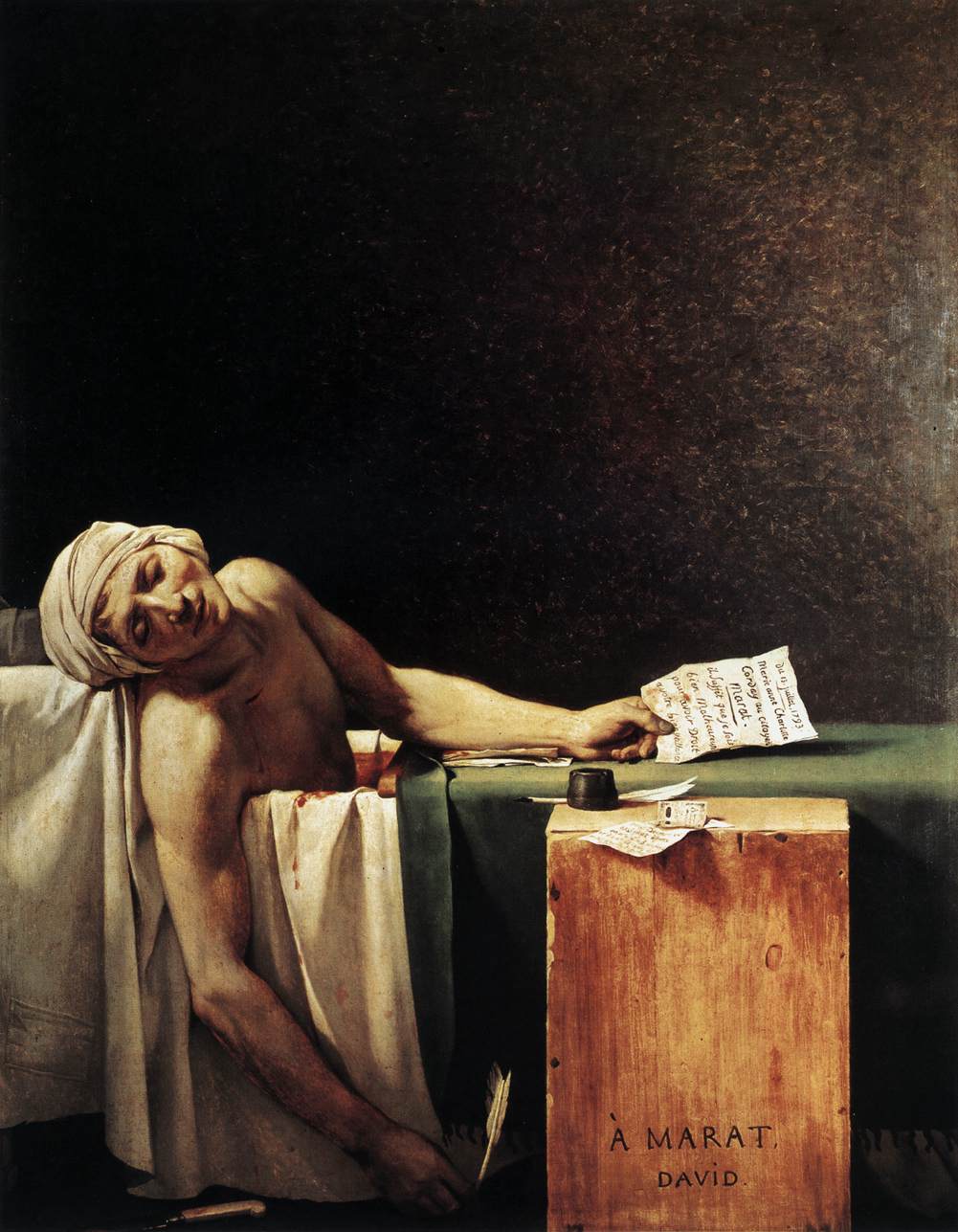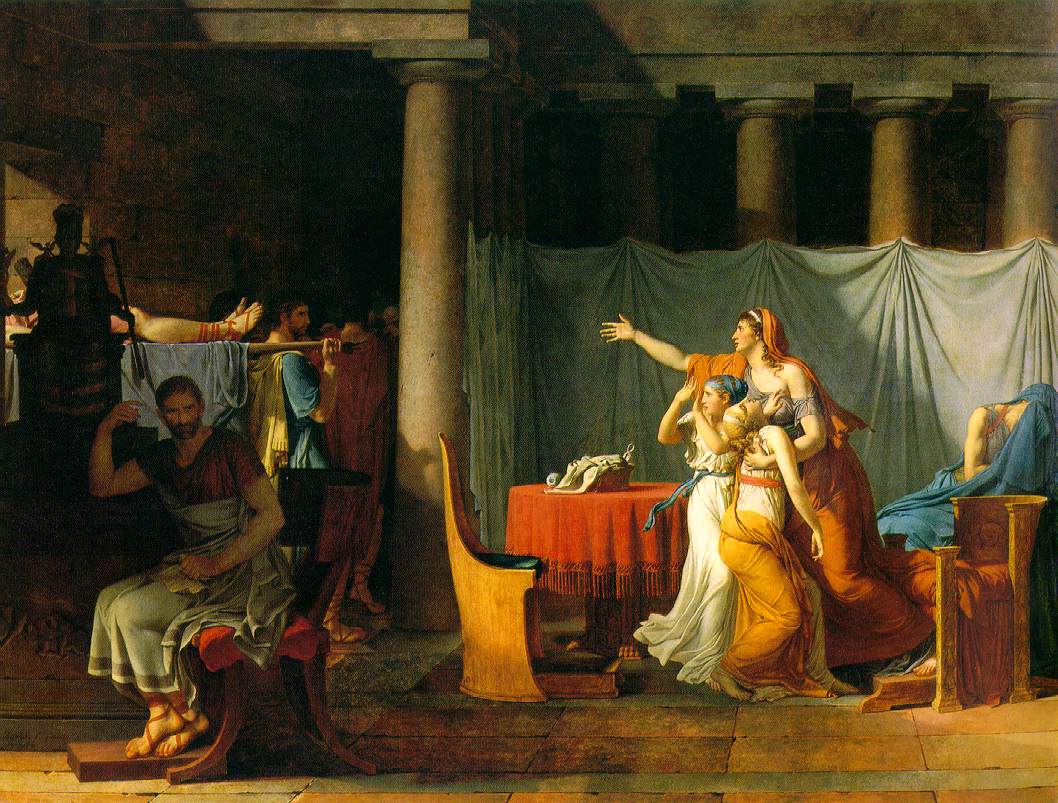Thursday, July 5, 2012
FILM 7: DAVID / SCHAMA
Schama approached David differently in the way that he focused more on the history of the time. The French Revolution was the backdrop for David’s story. In Caravaggio’s story there was more of a focus on what he was doing and not so much the history of the time. I think it was important for David’s story to be told this way because the French Revolution is what really propelled David and his career. The two films were the same in that there were still reenactments and dramatic lighting used to tell the stories. The reenactments in David’s story were more of historical events rather than David’s life. The dramatic lighting helped show how the Revolution was a very dramatic period. Also, you could really tell that Schama did not like David - he even said so at one point. This seemed to effect the light in which he approached David. Caravaggio killed someone, David painted about someone being killed. Schama made it seem like it was the opposite.
In my personal opinion, David’s The Death of Socrates is the most interesting painting because it is David’s take on a historical event that has interested me after taking Philosophy last semester. It was painted in 1787 with oil paints on canvas. The painting is 51inches by 77.2 inches. It controls your eye because of the subject matter. It depicts Socrates before he ingests hemlock as a death sentence. Socrates is the one sitting on the bed while his two friends, Plato and Crito sit with him. Socrates is pointing up toward heaven. I think this is Socrates showing that he does not really fear the death sentence he has chosen over being exiled. After reading both Apology and Crito, this painting really interests me. Socrates catches my eye first because he is a striking figure right in the center. The next thing I see is the group of people reacting to the event behind Socrates. I am assuming that Crito is the man with his hand on Socrates’ knee because it looks like he is still pleading with Socrates to chose exile over death. All in all, I find this particular painting to be one of the most interesting paintings done by David.
I think David is a decent person. I do not think that David was doing anything wrong. His paintings tell what he sees as the truth, and that is what most artists do. It does not really matter because he was not a criminal, he just created art that stirred people’s emotions. He lived during a time where people were doing much more terrible things like executing people. All David did was paint propaganda for the French Revolution.
Question: Do you think that Schama approached this video on David negatively because he personally is not a fan of David's? Could you see that he made David seem like a bad person more so than he portrayed Caravaggio (who actually killed a man)?
Subscribe to:
Post Comments (Atom)




Our answers were really similar for this film. I definitely agree that it focused heavily on the history and time period that David was a part of. I like that you point out the negative image that was put on David vs. Caravaggio. I did pick up on the fact that David was viewed negatively by Schama. I thought I was wrong, but after a little more research this definitely seemed to be the case. I think you did a good job of addressing that and also explaining the painting you chose. Knowing the background of Socrates also helped me understand it and that is a huge part of why it's interesting. I like how you said that Crito is the one with his hand on Socrates' knee. That's what I thought too. You did a really good job analyzing this film and the painting.
ReplyDeleteI do think that Schama approached the films differently for sure. With Caravaggio, it felt like more of an entertainment factor that he killed someone rather than a horrible act. Yet when David painted about it, it was portrayed negatively.
I think that is what's interesting about these films as well. We're watching them from certain people's perspectives every time. What if we watched them from someone who hated that artist they're making a film about? Our whole idea of them would change. I'm a big believer that there are two sides to everything and each artist probably is hated and loved at the same time. This is what keeps me interested in all of the art and films we have watched.
I do think that Schama portrayed David more negatively than he did Carraviggio. I do not think David was necessarily a bad person. He did some bad things but I feel like he might have some mental disorders. But this movie is also from the perspective of the narrator, Schama. Schama told his version of David. I'm sure Schama hs done his research on the subject.
ReplyDeleteDavid was greatly influenced by the revolution. The war contributed to many of his paintings.
I like the painting you chose. That painting has so much history and meaning. You did a great job analyzing the painting.